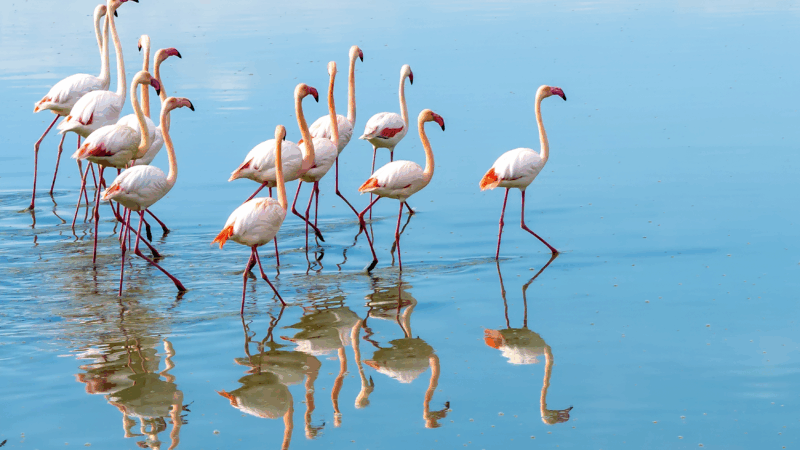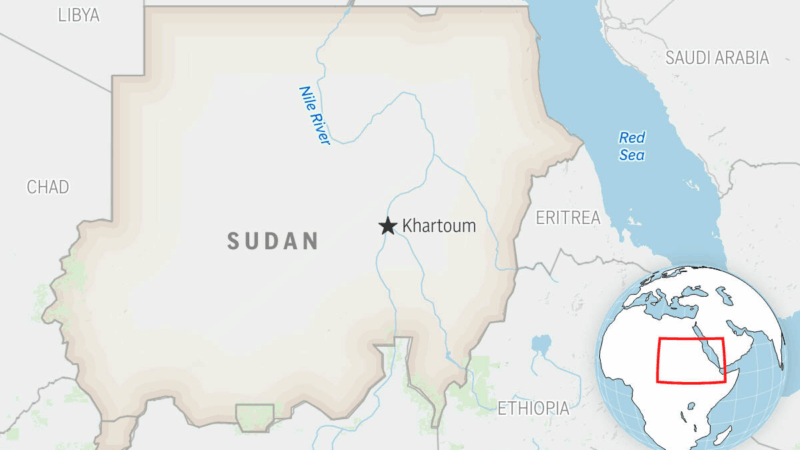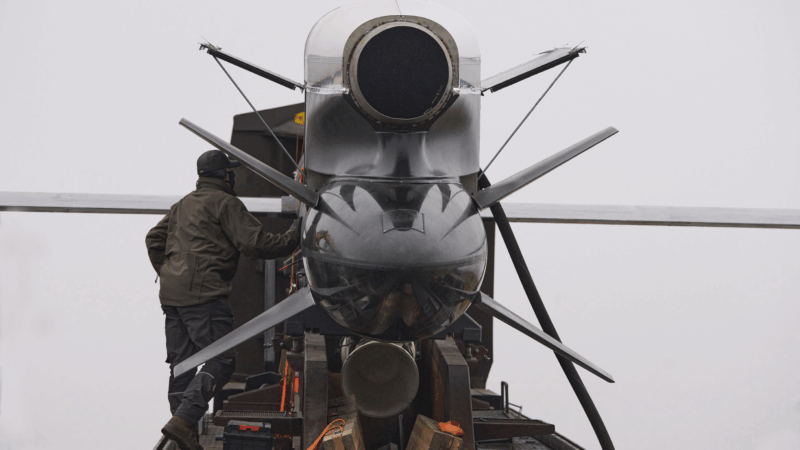Scientists have figured out why flamingos are such weird eaters
Flamingos look graceful, but when it’s time to eat, they’re very silly.
“All of their feeding behavior is so weird,” says Steven Whitfield, the director of terrestrial and wetlands conservation at the Audubon Nature Institute in New Orleans, La.
The lanky birds feed on shrimp and algae in briny swamps and marshes around the world. To grab a bite, they stick their heads underwater and open and close their bill rapidly, as if chattering. Then they stomp their feet and wobble around in the mud, bobbing their heads up and down as they go.
It’s not immediately apparent why the iconic pink birds would take this absurd approach to getting a meal. They are filter feeders, “so they’re kind of like the bird version of an oyster,” Whitfield says. They strain water through their L-shaped beaks, trapping shrimp, algae, seeds and anything else they find tasty.
But with their heads practically between their legs, their bills appear to be upside down and facing the wrong way to scoop up the shrimp and algae in front of them.
“Flamingos are doing everything wrong, it seems like,” says Saad Bhamla, a biophysicist at Georgia Tech University who studies how animals use physics to solve problems. Bhamla’s then-student, Victor Ortega-Jiménez, first noticed the odd feeding behavior during a day out for the laboratory at the Atlanta Zoo a few years back. Ortega-Jiménez wanted to find out what was going on.
“All we need is a hook, an observation, and it’s off to the races,” Bhamla says.
Of course, flamingos know perfectly well what they’re doing, and now so does Bhamla’s group. Writing in this week’s issue of the journal Proceedings of the National Academy of Sciences, the team reveals that the entire flamingo feeding process is actually a tour de force in fluid dynamics.
The bird is creating vortices in the water with almost every move. Take, for example, the bobbing of its head. The shape of its bill creates a tiny tornado as it pulls out of the water. The swirling stirs up prey and traps it long enough for the bird to duck back in and scoop it up. Same goes for the chattering, which pulls food up toward its beak.
Then there’s the strange stomping of their feet. The study finds that flamingos’ webbed toes create a pair of vortices that push food toward their bills. That’s why it makes sense to have the head facing the feet instead of whatever is in front of them.
“What they’re basically doing is playing with fluid dynamics — using the beak, using their legs, using their heads and necks,” Bhamla says.
Ultimately, Bhamla says, flamingos may have some more to teach humans. He works with chemists who, among other things, want to learn how to better filter water through membranes. Those membranes frequently clog up with debris similar in size to what the flamingos filter for their food. So it seems possible that some of the vortex-inducing techniques of flamingos could be adapted to help keep the filters clear.
Now, “we’re basically using flamingo-inspired clever tricks” to try and come up with solutions, he says.
Whitfield, who was not affiliated with the work, says that it shows the great thing about science — there are always mysteries waiting to be solved.
“And with birds as bizarre as flamingos,” he adds, “there’s probably more than average.”
‘The Abandons’ is a sudsy soap opera dressed up in spurs and a cowboy hat
On the surface it's a gorgeous, hardscrabble Western, awash in stark landscapes, grubby faces, bar fights and banditry. But scratch away the grime, and you expose the pure, glitzy soap opera beneath.
Sudanese paramilitary drone attack kills 50, including 33 children, doctor group says
Thursday's attack is the latest in the fighting between the paramilitary group, the Rapid Support Forces, also known as the RSF, and the Sudanese military, who have been at war for over two years.
Russia unleashes drone and missile attack on Ukraine as diplomatic talks continue
Russia unleashed a major missile and drone barrage on Ukraine overnight into Saturday, after U.S. and Ukrainian officials said they'll meet on Saturday for talks aimed at ending the war.
Takeaways from the latest special election and what it means for control of the House
There was yet another sign this week of a potential 2026 wave that could hand control of the House of Representatives to Democrats.
West Virginians question National Guard deployments after attack on 2 of their own
Army Specialist Sarah Beckstrom was fatally shot in Washington, D.C., while Air Force Staff Sergeant Andrew Wolfe was seriously wounded. Trump says the deployments are necessary to fight crime, but others disagree.
Trump official signals potential rollback of changes to census racial categories
Trump officials are reviewing changes to racial and ethnic categories that the Biden administration approved for the 2030 census and other federal government forms, a White House agency official says.






